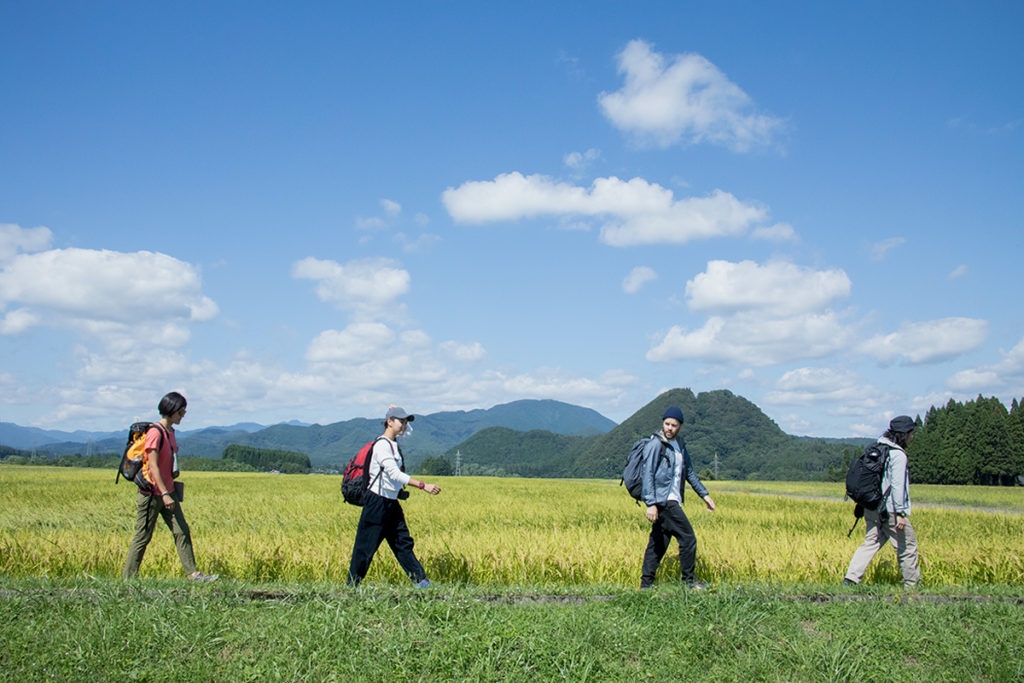Following in the footsteps of Isabella Bird
In 1878, a woman came all the way from England to Japan via continental Europe. Her name was Isabela Bird. Gallivanting around the world as a “Victorian lady traveler,” she was a rarity at the time. Isabella spent approximately four months traveling the northern Japan area from Tokyo to Hakodate via Niigata, Akita, and Aomori. An inland route unexplored by Westerners, it was a great adventure and a veritable tour through uncharted territory.
Isabella had originally planned to take a boat from Niigata to Hakodate but changed her course to overland because she wanted to “see the real Japan.” One such route is the Ushū Highway. In the Edo period, this highway was one of the two major thoroughfares of the Tohoku region along with the Oshū Highway. The Ushū Highway diverged from the Oshū Highway at Koori-juku (Fukushima Prefecture), traversed the Akita domain via Kaminoyama and Yamagata, and then crossed the Yatate Pass to enter the Hirosaki domain, a journey of about 500 km. This time, our group will walk along a section of the Ushū Highway, following in Isabella’s footsteps. Traveling partner this time is Indonesian photographer Deby Sucha. Isabella detailed her tales and impressions of life and scenery in the Japanese outlying areas in her book “Unbeaten Tracks in Japan” and Deby hopes to capture the sentiments of this trip through her lens.
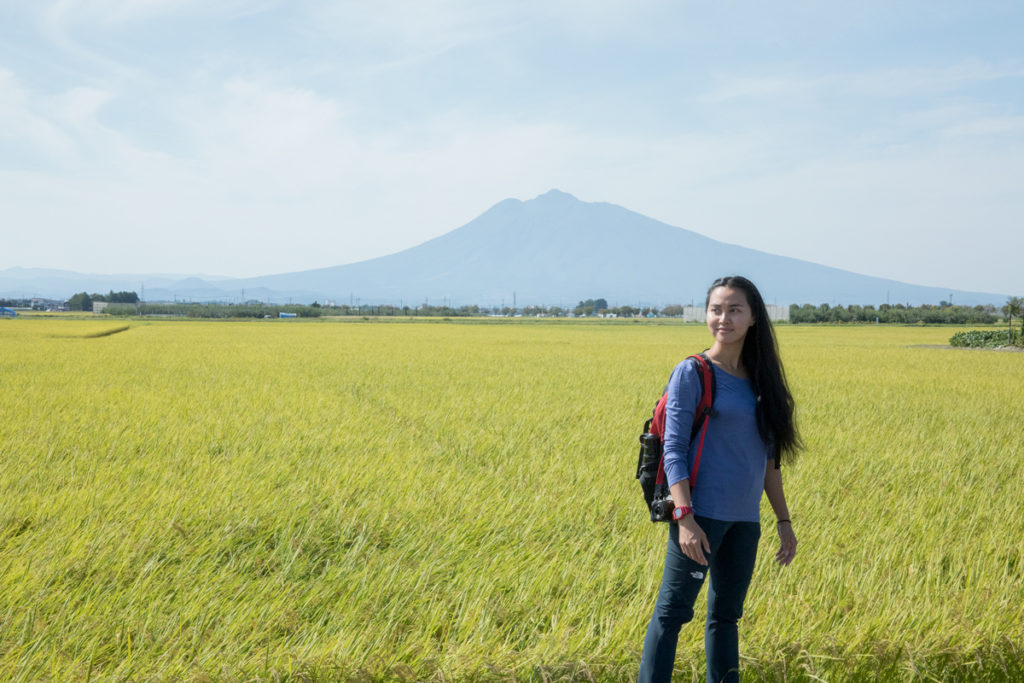
We alight at JR Takanosu Station. This area is said to be maintained by local volunteers as a historical road, and they have preserved the original ambiance of the former highway, including the remains of the Otsutsumi distance marker mound. After crossing the ruins of this mound from Otsutsumi, we come to the “remains of the crossing of the Hayaguchi River”. There was no boat dock, and the crossing was notorious as the most perilous point on the highway during heavy rain. Arriving during rainy season, Isabella had to dismount from her trusty horse and swim across the swollen Hayaguchi River. Apparently, upon entering the Akita domain, she was plagued by intermittent heavy rain, and wrote bitterly about the downpours and muddy roads in “Unbeaten Tracks”.
So, at Iwase (Tashiro Town), the Ushū Kaido proceeds in the direction of Odate. Odate housed the main citadel of Odate Castle, and the surrounding area was a typical castle town. Shrines and Buddhist temples associated with the Satake Nishi family – the castle’s feudal lord – are scattered throughout the area. The streets were said to be bustling during market days, but Isabella, who once again fell foul of bad weather, did not seem particularly impressed with the area.
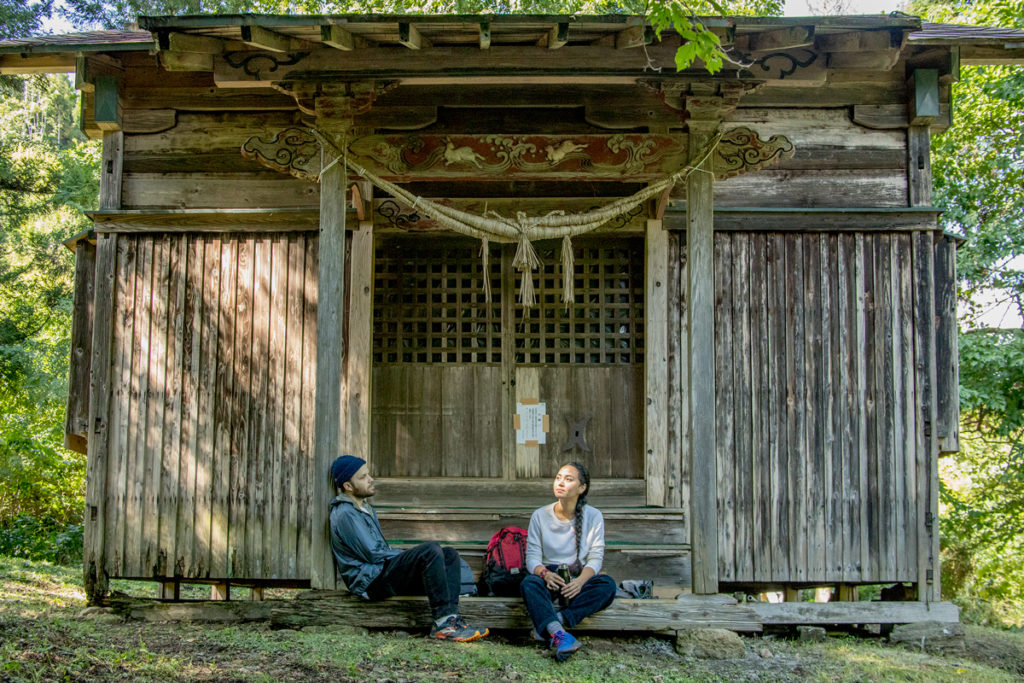
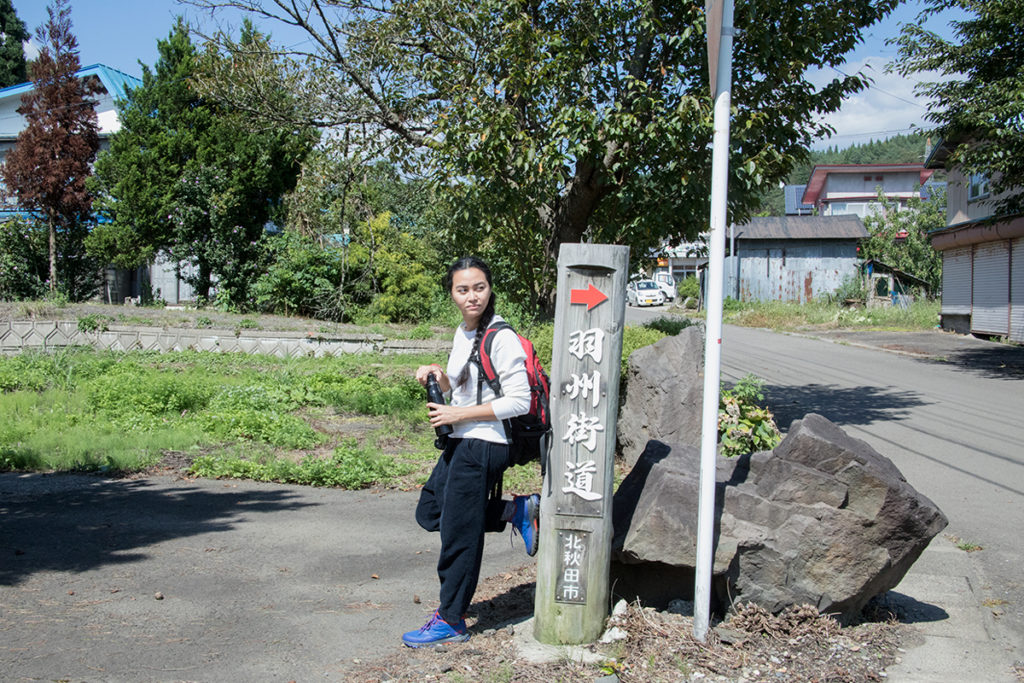
In Odate, we observe the traditional craftwork called Magewappa. While some say that it dates to the Nara period, it was not until the Edo period that production of this bending woodcraft began to flourish. The Satake Nishi family, lords of Odate Castle, became aware of the abundant stock of Akita cedar in their territory, and encouraged low-ranking samurai to take up the craft as a domestic occupation.
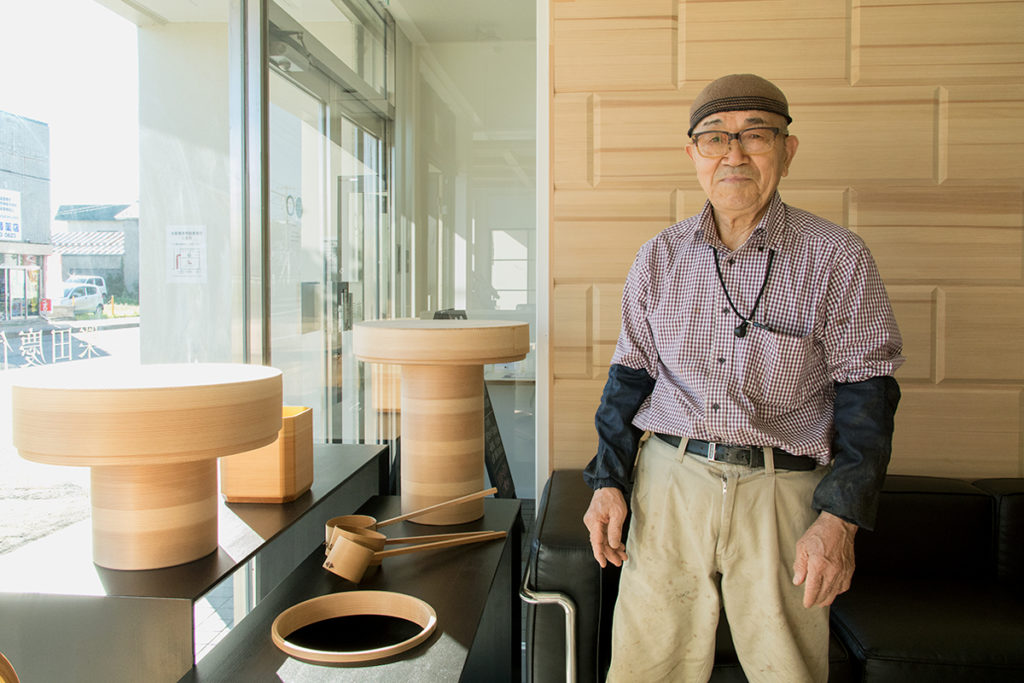
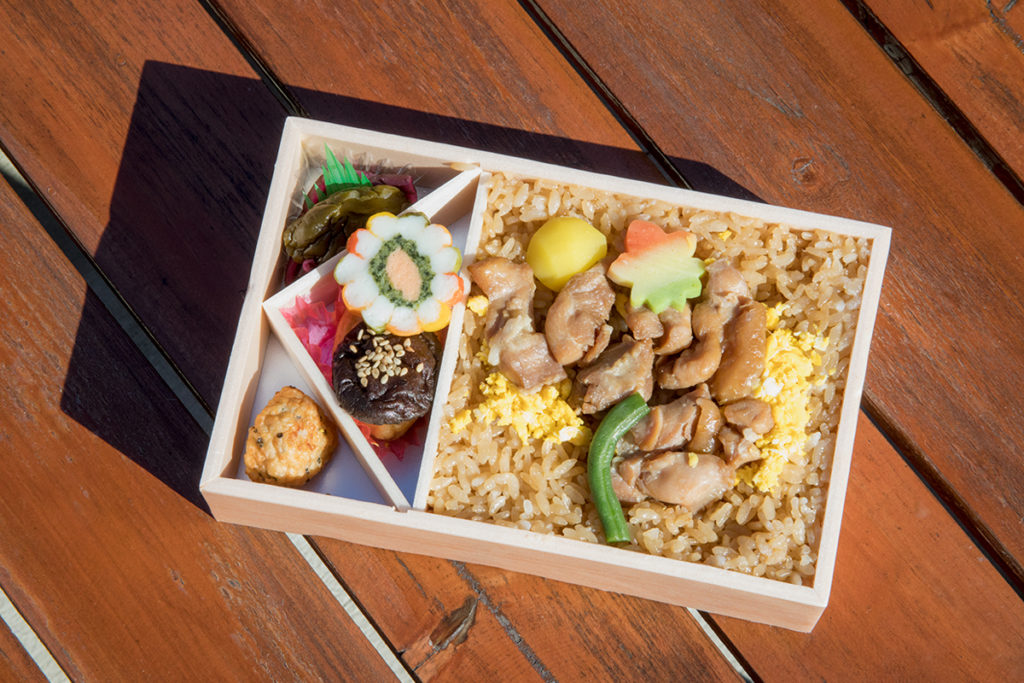
Appearing beyond Odate is one of the highlights of the region, the Yatate Pass. Yatate Pass is located at the eastern edge of the Shirakami Mountains, and the surrounding forest is dotted with natural Akita cedar trees over 300 years old. It is a historic mountain road once graced by Maeda Toshiie, while the likes of Ino Tadataka, Yoshida Shoin, and others traipsed through during the Edo period. Although the Yatate Pass was once said to have been “extremely difficult to pass”, these days it is maintained as a historical road and is a very pleasant stretch of trail. Isabella encountered this pass in August, and yet again was caught by inclement weather. She does, however, describe the beauty of the forest she encountered when wandering in the vicinity of the pass: “This pass is lonely, solemn, dense, and austere. The great cedar trees jut upwards straight as masts, stretching their long young branches high in search of light.”
Meanwhile, we enjoyed the trail surrounded by Akita cedars under a clear autumn sky without a single cloud. Isabella also observed, “The trees generously scatter their fragrance.” Indeed, there is a fresh scent of cedar all around us. On the way, a wild serow jumps out from nowhere, much to our delight.
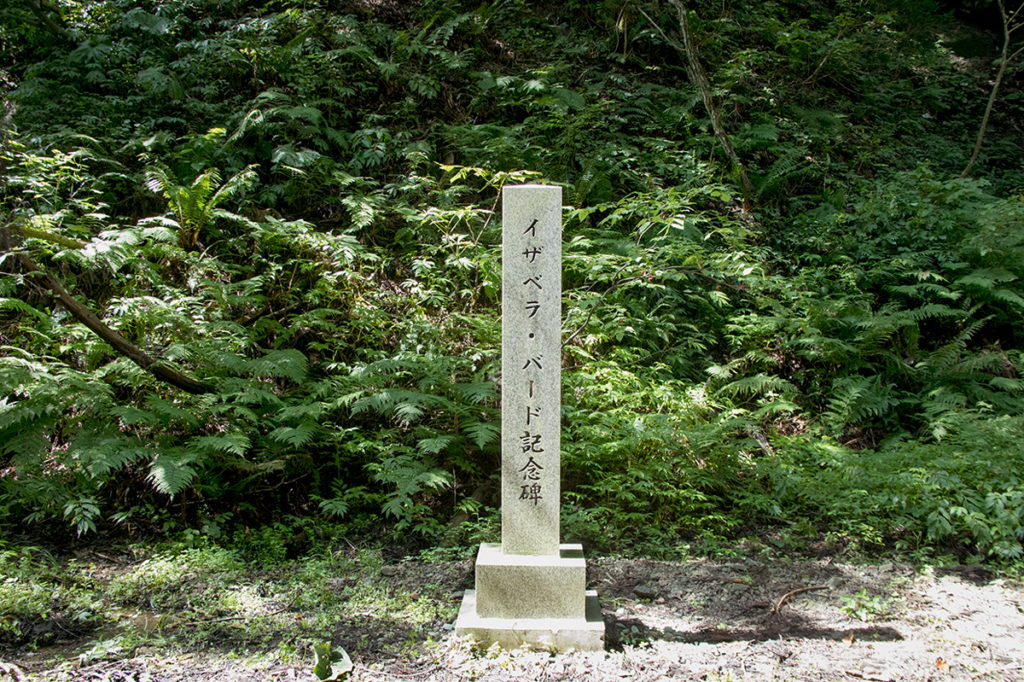
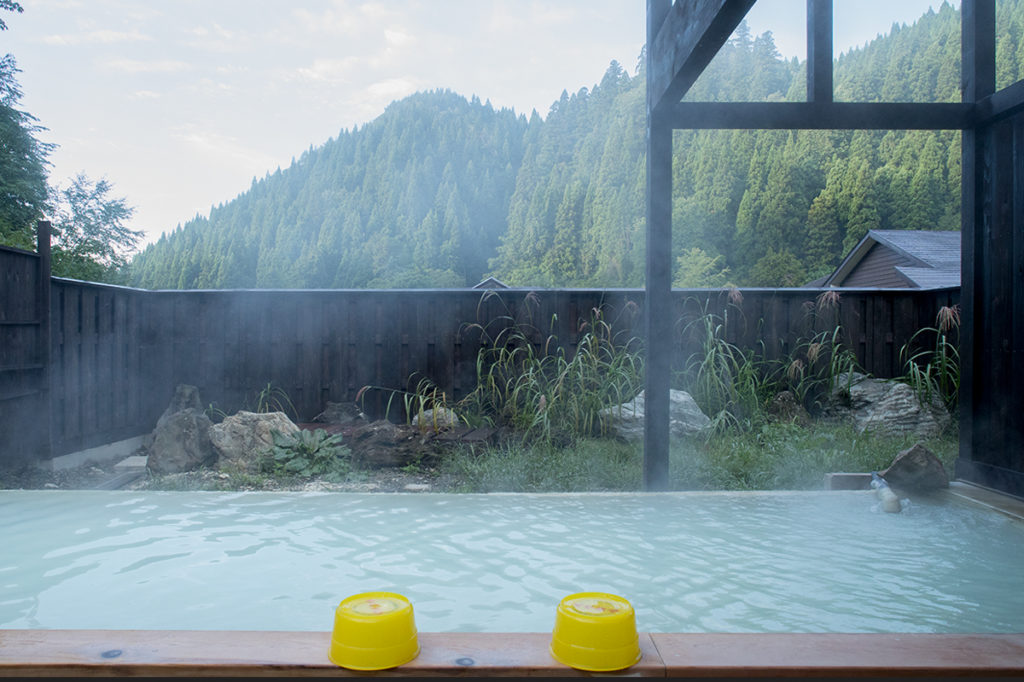
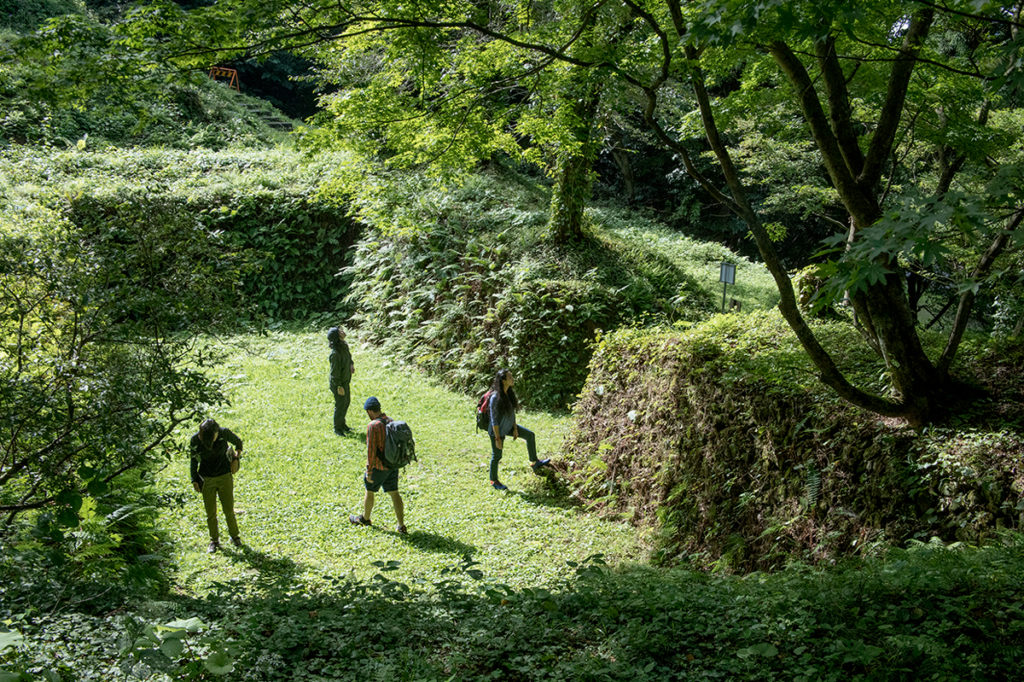
We cross over the pass and at last reach Aomori Prefecture. On the way down is the remains of the old guardhouse for the pass. The Hirosaki Clan are thought to have used this mountain road as the route for sankin-kotai (alternate attendance in Edo.) Beyond is Ikarigaseki, once the site of a major guard post of the Hirosaki Clan, described by Ino Tadataka as “the finest guard post in Ōu”. The Ushū Kaido then enters Owani Town, known for its hot springs and bean sprouts. Owani Onsen, which is said to have opened at the end of the 12th century, flourished during the Edo period as a destination for medical treatment for folk from the Tsugaru region. A local specialty that utilizes the hot spring water and heat is the Owani Onsen bean sprout, which was first cultivated in the Edo period. Grown by farmers using a native variety of soybeans that have been passed down from generation to generation, they can reach 30 cm long! We were quite lucky to be able to find the Owani-onsen specialty, a stir-fried bean sprouts set meal, despite being out of season.

In fact, Isabella did not take the Ushū Kaido through Hirosaki after this but used Nyui-dori from Owani Sabaishi to Kuroishi. Although this route was taken simply to shorten the distance, Isabella was extremely taken with the castle town of Kuroishi. During her three- or four-night sojourn, she enjoyed the town in all its glory, seeing a wedding ceremony and marveling at the fantastic sight of the traditional “Kuroishi Neputa” with its gorgeous openwork lanterns.
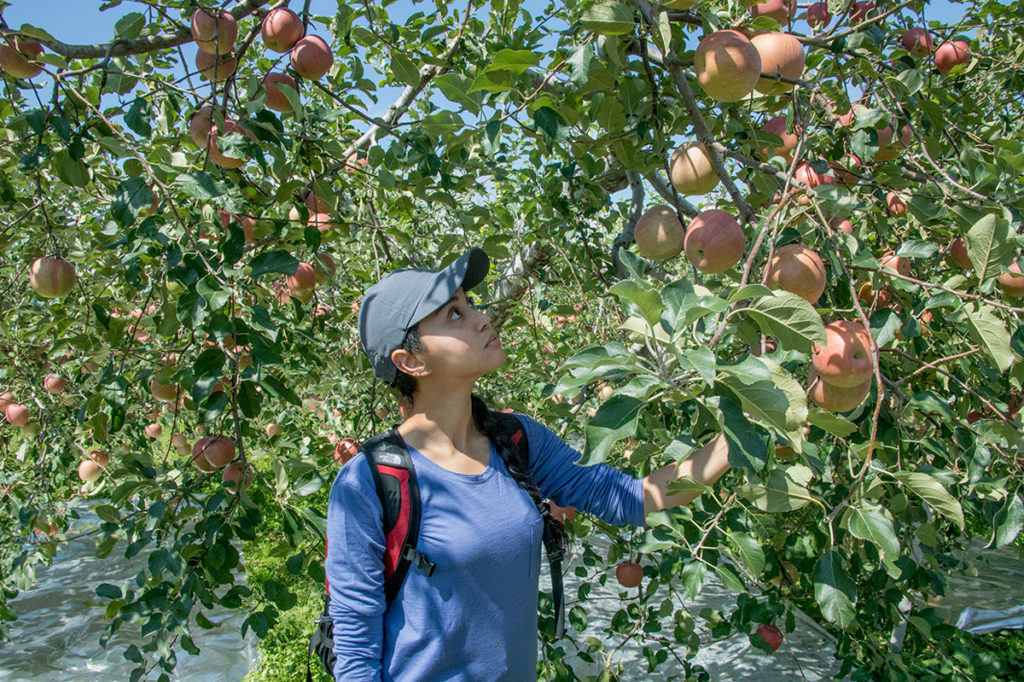
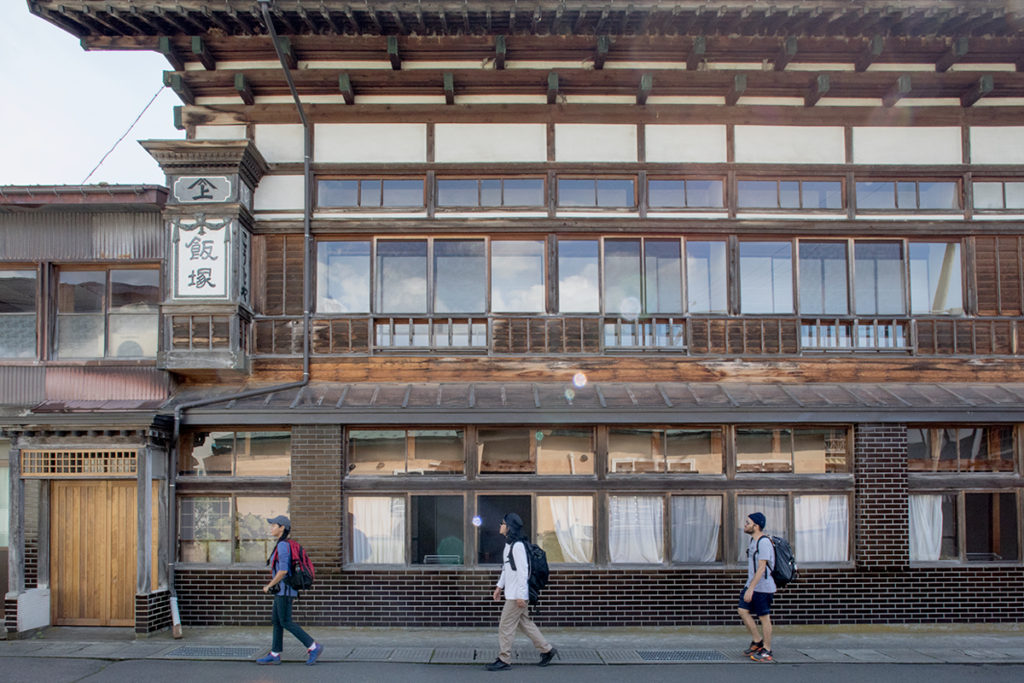
The Kuroishi of today still retains the charm of a castle town that once so attracted Isabella. The “komise,” a traditional structure dating back to the feudal era, was akin to an arcade of the time that blocked the sun’s rays and snowstorms. The “Nakamachi Komise Street,” is a shopping arcade lined with stores, including old sake breweries, warehouses, and the 250-year-old “Takahashi Family Residence,” which is designated as an important cultural asset by the national government. It feels like we have entered a time warp into the Edo period.
After regaining all her vitality in Kuroishi, Isabella went on an enjoyable excursion to Nakano Momijiyama. In the early 19th century, the lord of the Hirosaki domain brought over a hundred varieties of maple saplings from Kyoto and transplanted them into this small mountain, where moss-covered stone steps and a magnificent torii gate stand in a forest of 200-year-old maple trees, firs, and giant cedar trees that are over 500 years old. Isabella wrote that she was “enchanted” by everything here, and it appears that the fresh air of the forest has had a similar effect on Deby.
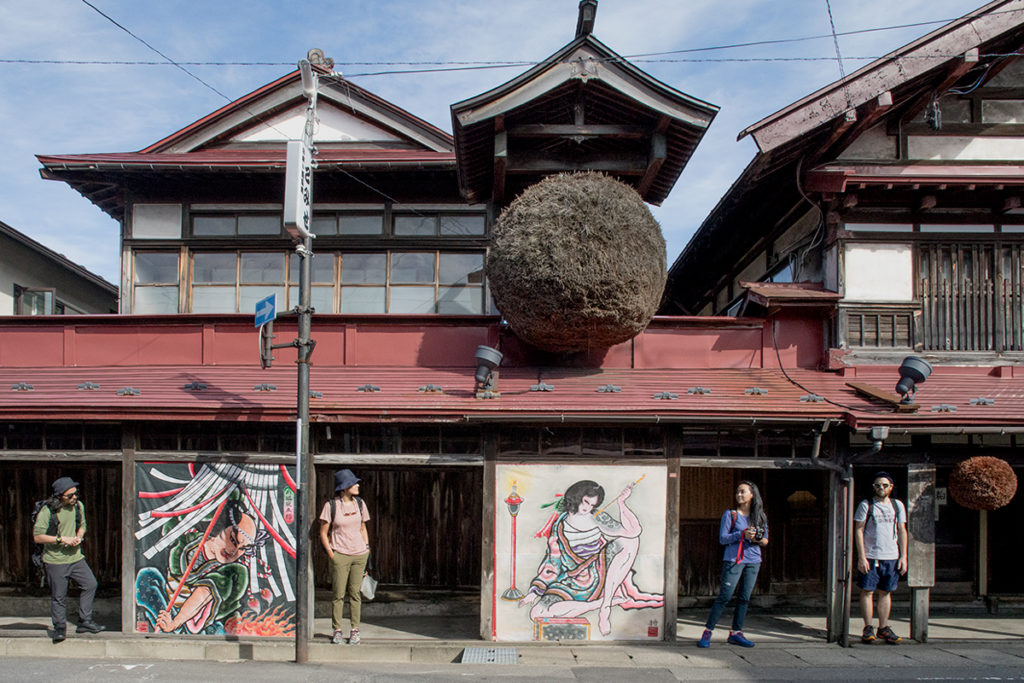
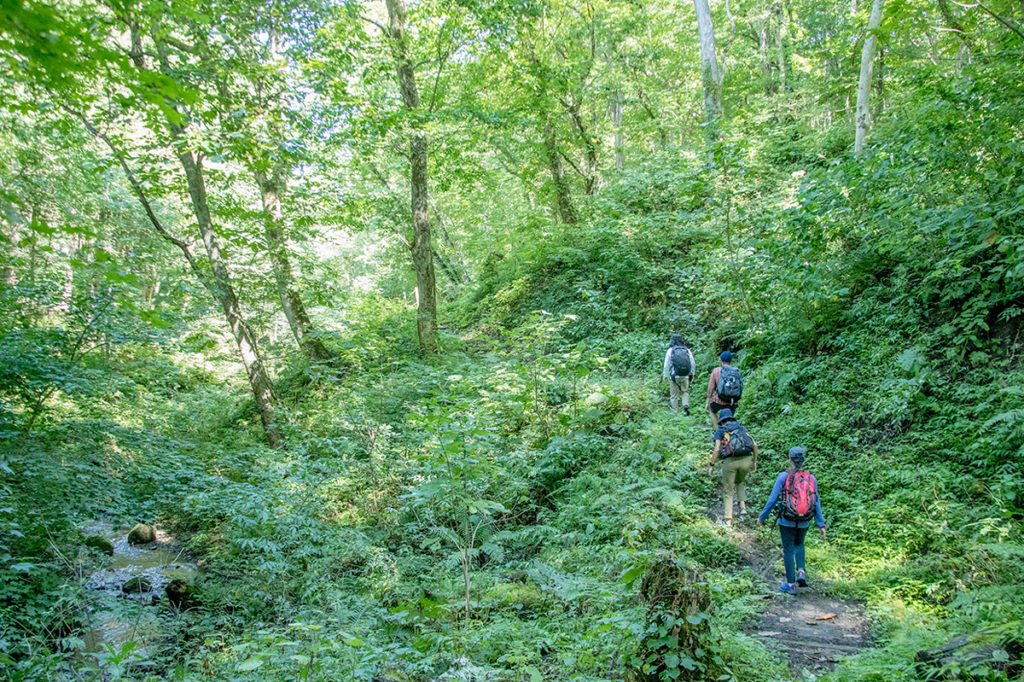
The long-absent sunny weather, comfortable inns, exotic festivals, and honest folk must have provided Isabella with some peace of mind as she finally set out for Hokkaido. After Kuroishi, it was only 30 kilometers to Aomori, but the incessant rain once again forced Isabella to trek along muddy roads. The few days in sunny Kuroishi must have been a poignant memory during these arduous hikes.
And so, this marks the end of PAPERSKY’s trip, retracing Isabella’s epic journey. The bucolic Tsugaru countryside and the nostalgic streets of Komise have impressed Deby, who remarks “Just like Isabella, everything I saw here stole my heart”. She left Kuroishi with a promise to return.
